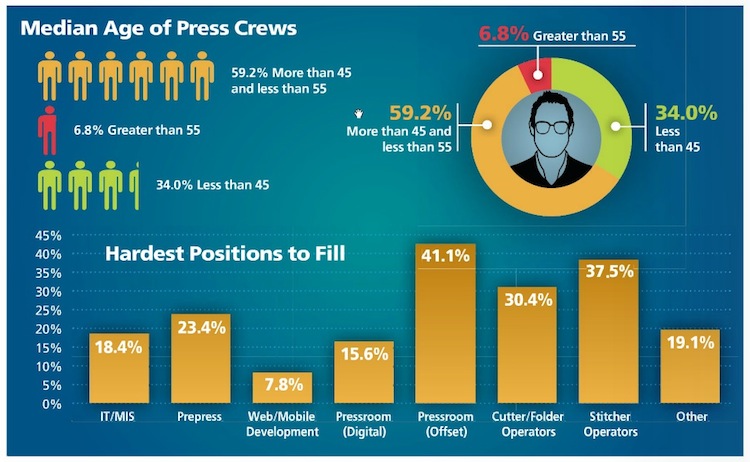 The major challenge facing the print industry during the next 10 years isn’t technology and marketing, but rather finding and training good people. A recent study conducted by several Printing Industries of America (PIA) Affiliates asked: What percentage of your skilled workforce (Production Personnel) do you estimate will retire in the next 5 to 10 years? More than 50 percent of the respondents indicated that a significant amount (30-50 percent) of their workforce would retire in that period. The same survey showed that the median age in the offset pressroom was over 45 in nearly two-thirds of the companies surveyed. (Refer to the infographics)
The major challenge facing the print industry during the next 10 years isn’t technology and marketing, but rather finding and training good people. A recent study conducted by several Printing Industries of America (PIA) Affiliates asked: What percentage of your skilled workforce (Production Personnel) do you estimate will retire in the next 5 to 10 years? More than 50 percent of the respondents indicated that a significant amount (30-50 percent) of their workforce would retire in that period. The same survey showed that the median age in the offset pressroom was over 45 in nearly two-thirds of the companies surveyed. (Refer to the infographics)
As the print industry struggles with shortages of skilled workers, increased emphasis is placed on what can be done to attract a pipeline of younger talent. Enter the SkillsUSA National Leadership and Skills Conference, which took place June 19-23 in Louisville, KY.
The SkillsUSA National Leadership and Skills Conference is a national competition for public high school and college/postsecondary students enrolled in career and technical education programs. The world’s largest showcase of skilled trades brought together more than 15,000 students, teachers, education leaders and representatives from 600 national corporations, trade associations, businesses and labor unions.
The print industry was well-represented, especially the production printing segment.
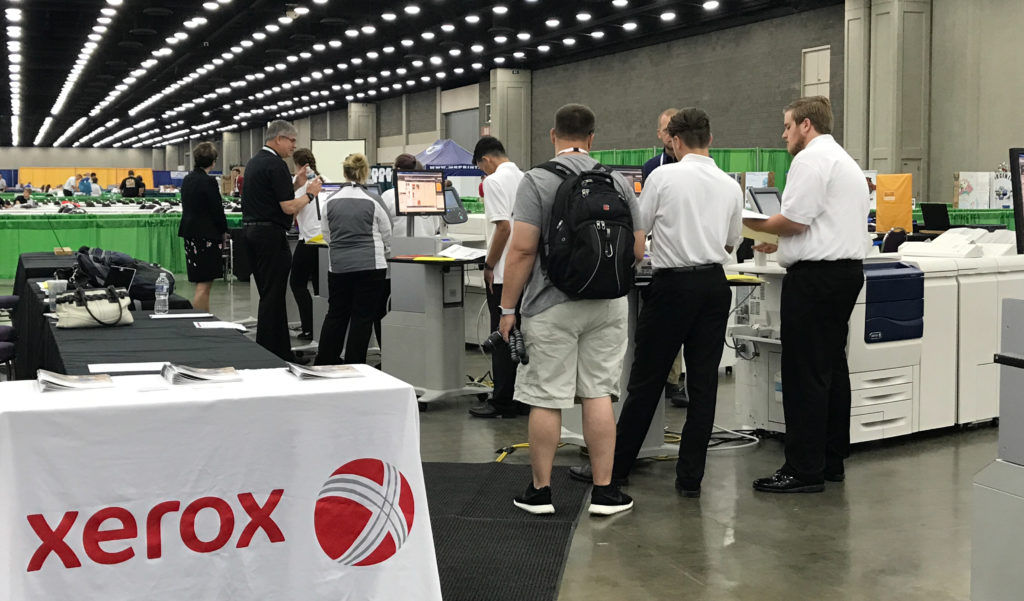
Working in close partnership with SkillsUSA, Xerox Corporation and EFI participated in the digital press operations portion of the Graphic Communications competition. Students completed pre-press, printing and finishing tasks on six Xerox Digital Presses with EX Print Servers, powered by Fiery®. These accomplishments demonstrated proficiency and interest in key skills required for jobs in the Graphic Communications/Print industry.
Mentoring and Coaching Make a Difference
Students received coaching and mentoring from onsite marketing, technical and training resources from both Xerox and EFI, as they practiced with mock exercises prior to the final competition. By Day Three, students were highly focused and ready to compete. During the awards ceremony, the top three performers won gold, silver and bronze medals in college and high school divisions.
“This experience is phenomenal! Words do not do it justice,” said Dan Wheeler, Graphic Communications Technical Committee Chair of the conference. “You have to be here to truly understand the impact SkillsUSA is having on America’s growing skills gap. Specifically, I believe the investment in education is a lifeline to closing the skills gap in printing and showcasing the fact that print of all types is indeed alive and everywhere.”
As owner of DK Wheeler Training and Consulting Services, Dan Wheeler has expert insight into career training needs. “We give students experience and exposure to people, products and equipment in our industry. Print is NOT dying; it is evolving. Our tech committee is incorporating that evolution into our contest as we go, changing it every year. So we have wonderful partners, like Xerox that help bring in digital print elements. This year we die cut on our offset presses, bringing in elements of packaging. Next year, maybe large format printing or car wrapping or…who knows! Just look around you, print is everywhere!”
Skilled Workforce Is a Common Goal
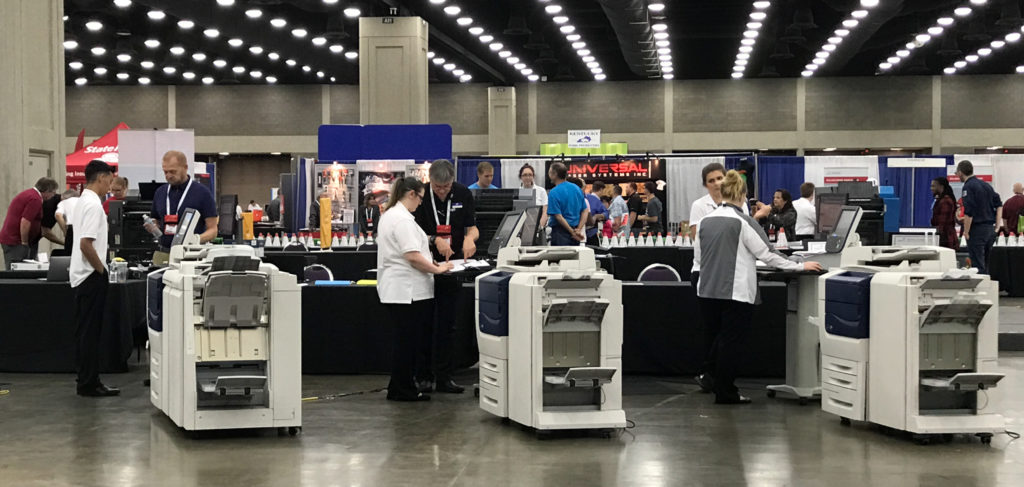
Students in the SkillsUSA graphic communications championship practice using the Xerox and EFI equipment the day before the competition. The students, wearing white shirts, are being advised by Danny McCray of Xerox, far left, and Malcolm Crawford of EFI, center.Providing a skilled workforce in the Graphic Communications/Print industry is a goal shared by SkillsUSA, Xerox Corporation and EFI. To further that objective, Xerox developed a robust learning and mentoring platform – the Xerox Digital Career Pathway Program (XDCPP). XDCPP provides digital production printing curriculum and hands-on training to teach skills aligned to the National PrintED Accreditation process. Currently in use in about 20 states, the Xerox program supports building the future print industry workforce through education (K-12, community and technical colleges), state and government agencies, and corrections and juvenile facilities. The program provides students and adult learners with opportunities to acquire the skills and knowledge to be successful in digital production printing and workflow careers.
Today’s print industry is changing, and demand for skilled digital printing workers is increasing. Traditional offset printing is a mature technology, while digital technology gives businesses the opportunity to cost-effectively print in smaller quantities, personalize content and achieve stunning quality. The industry recognizes the need for digital capabilities and the skilled workforce to address the need.
What’s the answer? It’s a recommitment to training. For some, a four-year college degree and ensuing profession is the right choice. But for others, a different approach may be more appropriate. Skilled trades can provide an excellent alternative or bridge to further education. A four-year college degree may not be right for everyone, but opportunity is. And that’s what SkillsUSA and our Digital Career Pathway Program provide.
We’re thrilled to join SkillsUSA and EFI to celebrate the value of print and interact with the future minds of the industry. At Xerox, we’re passionate about shaping the next generation of print professionals. Efforts like these provide the future workforce with the fundamental tools to succeed.
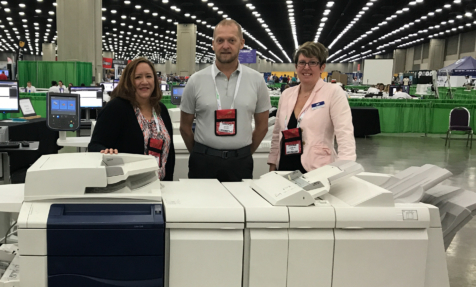
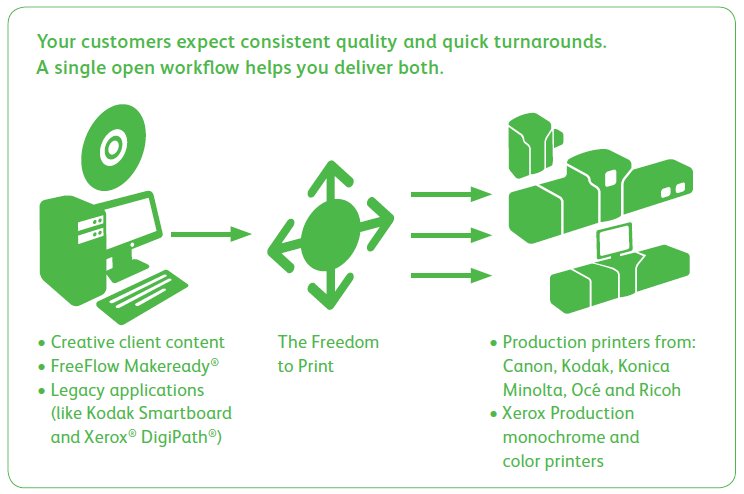


Certainly I agree with this article, but it does not address those who still print with INK. Traditional offset still has its place in the market and we have the same struggles: an aging workforce and lack of pipeline of younger skilled employees.
The other issue is wages and benefits. As an industry we have done a great job of streamlining and reducing the skill set needed to run production equipment, but we have also created an atmosphere so competitive that prices are cut to bare minimum. Companies have cut pay rates, medical and retirement benefits to a point where there is no good reason to choose Graphic Arts as a career.
Some of the Profit earned by companies needs to be put back to the employees. Low wages, High Deductible Medical Care & No Employer Contributions to Retirement Accounts does not help in attracting skilled workers.
There are plenty of other industries that offer more.
I agree with Jim’s statement. I just turned 30, I’ve been in large format printing since graduating college in 2010. I make just over 35k a year in a 4 person shop that turns almost a million in sales each year, doing pre-press, production and installation. Add that my health insurance provided here has a 5000 deductible and we get no retirement contribution; especially with hearing from folks in the industry in other parts of the country are saying the same thing, I’m considering leaving the print industry all together. I haven’t seen much incentive to switch companies or go the technician route as an alternative, it’s looking like its time to just bail.
Interesting article. I think Cory’s comment is quite relevant as well. I’m the manager of a prepress department for a flexographic/digital printing company and I’ve found that the issue with recruiting skilled young people (at least in the realm of prepress) is the failure of vocational schools and/or colleges to properly train candidates to use the current software along with the hardware to produce quality craftsmanship in their end product. Additionally, businesses hire sub-par graphic designers that submit complete garbage and expect perfection from their printers. I will say that a team of skilled operators within a printing company that have the right equipment can take print collateral that looks like a Ford Pinto and turn it into a Mercedes. Even with the incorporation of digital presses, digital plates and digital proofing, there is and there will always be a need for knowledgeable operators at every stage of the process to tweak the product to improve quality. In the age of low-margins and fast turnaround, knowledge is being lost and so the quality declines. Printing companies large and small need to smarten up and invest in their people. In my experience, the first 6 months I worked for a printer taught me more valuable information than all of my college education combined. Vocational schools and colleges are relatively useless in my opinion for training people for the printing industry. There are far too many tools within printing that differentiate from one business to another, and for a school to adequately train a student to specifically master one or more of the necessary skills to join up with a printer is in my opinion an ineffective practice. On the job training is the only way to go.